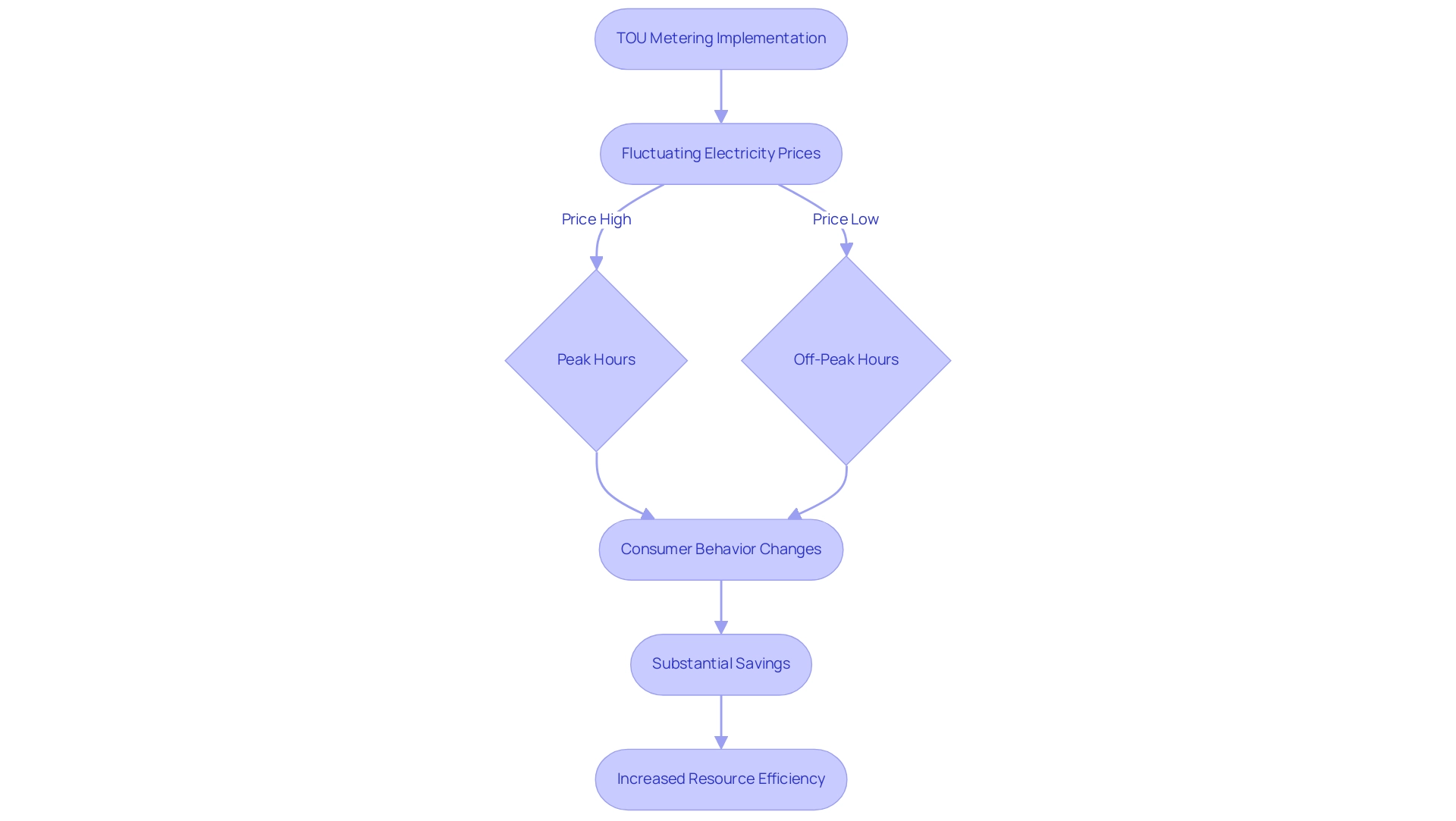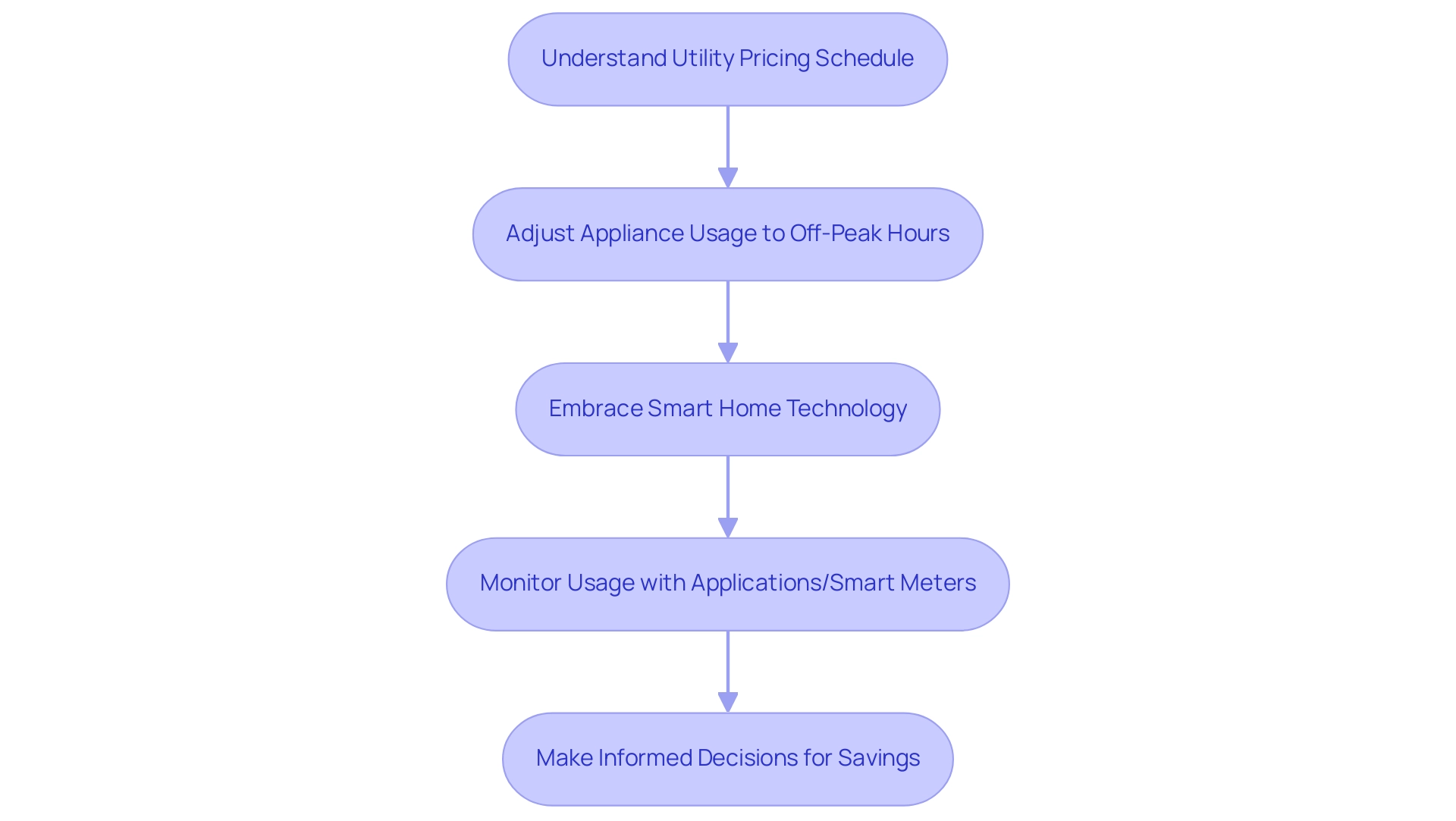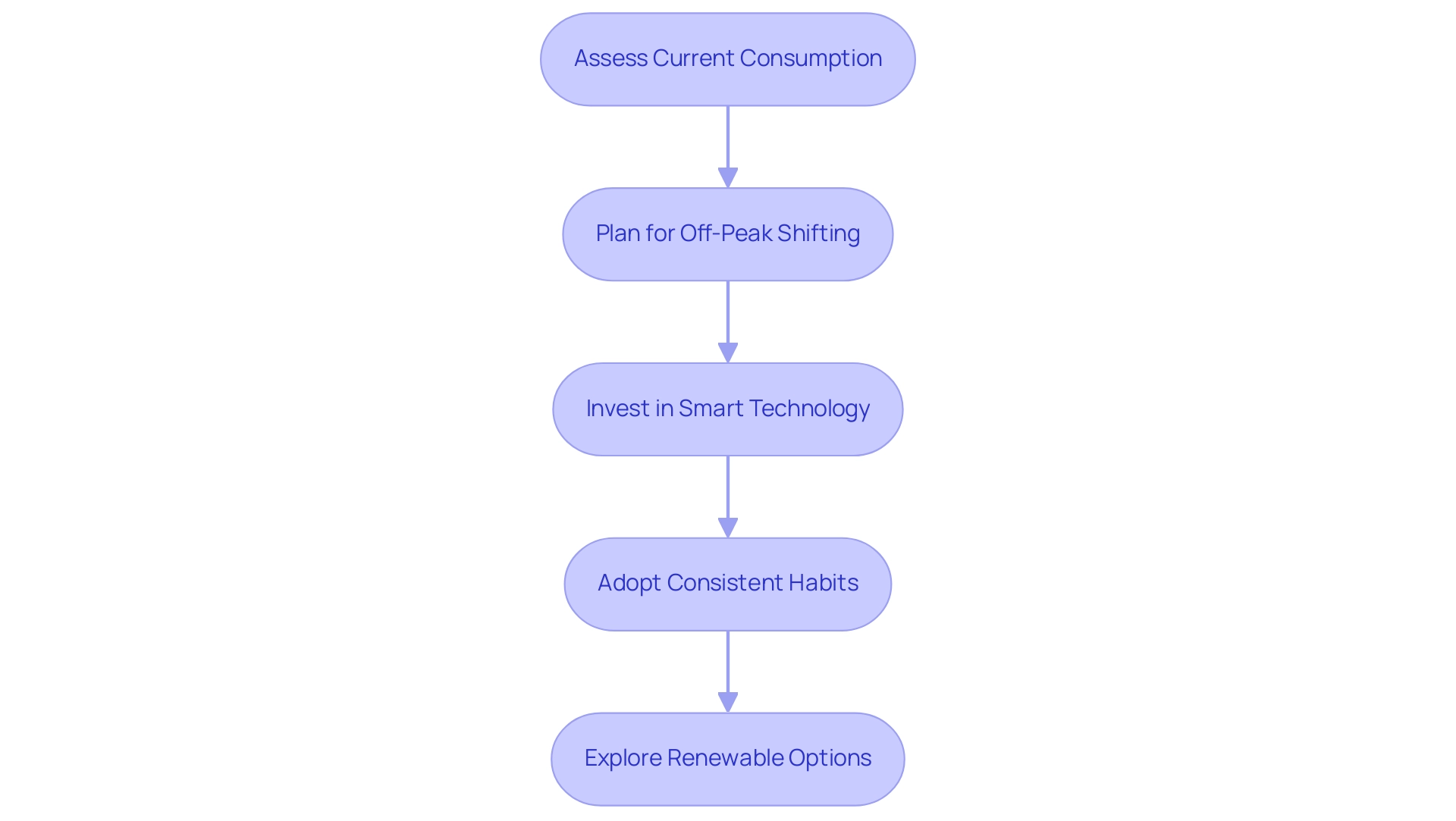Introduction
Navigating the complexities of energy consumption can feel overwhelming, especially for homeowners looking to save on their utility bills while being environmentally conscious. Enter Time-of-Use (TOU) metering, a revolutionary approach that not only adjusts electricity prices based on demand but also empowers homeowners to make informed decisions about when to use energy. By shifting usage to off-peak hours, individuals can unlock significant savings while contributing to a more sustainable energy grid.
As the landscape of energy management evolves, understanding the benefits and practicalities of TOU metering becomes essential for those eager to optimize their energy consumption and embrace smarter living. This article delves into the ins and outs of TOU metering, exploring its advantages, how it works, and the challenges homeowners may face along the way.
What is Time-of-Use (TOU) Metering?
Tou metering is a game changer in how we perceive costs associated with power. Under this system, the price of electricity fluctuates throughout the day: it’s typically more expensive during peak hours when everyone is using power and more affordable during off-peak times when demand dips. This dynamic pricing framework not only encourages homeowners to use electricity when it’s less expensive but also promotes smarter resource consumption overall.
By adjusting your consumption habits—like running appliances at night or heating your home during the day—you can enjoy substantial savings on your bills. As specialist David Roberts puts it,
I’ve been reporting on and explaining clean topics for almost 20 years, and I love talking to politicians, analysts, innovators, and activists about the latest progress in the world’s most important fight.
His insights highlight the growing trend towards innovative pricing structures that benefit both consumers and the environment.
Additionally, the adoption of advanced measurement technologies is on the rise, with smart water device adoption expected to grow at a CAGR of 16% by 2030. In 2013, there were 47.32 million residential advanced meters, showcasing a significant shift towards modernized resource management. A case study on the growth of residential advanced meters in the U.S. indicates that the number rose from 38.52 million in 2012 to 104.24 million in 2022, reflecting the increasing acceptance of these technologies.
With tou metering, numerous residents are realizing the extent to which they can conserve resources while aiding in resource efficiency.
Benefits of Time-of-Use Metering for Energy Consumers
Tou metering provides exciting opportunities for homeowners to save money on their utility bills. By shifting power consumption to off-peak hours, you can significantly lower your electricity costs. Recent studies have shown that this practice not only benefits your wallet but also promotes a more efficient energy grid, which is great for sustainability.
In fact, every megawatt (MW) of peak reduction is valued at approximately $154,350 in avoided transmission charges, a figure that’s expected to rise as demand increases. Additionally, GELD has observed a more than 10% shift out of peak hours in the winter, demonstrating how effective TOU metering is in changing consumer behavior. Ahmad Faruqui, a principal at the Brattle Group, points out that:
Customers who use the same kWhs during off-peak times pay the same bill and are subsidizing the others.
TOU rates can redress that inequity. This highlights how TOU pricing can create a fairer system for all consumers. Furthermore, homeowners who adjust their usage patterns to off-peak times can often take advantage of various incentives from utility companies, such as rebates and discounts.
However, it’s important to recognize that some perceptions exist around TOU rates—particularly regarding low-to-moderate income (LMI) customers. The argument that TOU rates disproportionately affect these groups can overlook their potential to adjust their usage. In fact, the perception that TOU rates unfairly penalize LMI customers may influence regulatory and legislative decisions, but it’s crucial to consider that these customers can adjust their consumption habits.
Adopting TOU metering not only helps individual households in reducing expenses but also contributes to creating a more balanced and sustainable power future.
How TOU Metering Works: Maximizing Savings and Efficiency
To truly maximize your savings with tou metering, it is essential to understand your utility’s pricing schedule. In New Jersey, for example, on-peak summer hours run from 8 a.m. to 8 p.m. EST, Monday through Friday, which is when demand—and prices—are at their highest. However, if off-peak pricing is not significantly cheaper than current rates, switching to tou metering may not yield the expected savings.
By adjusting your use of major appliances, such as dishwashers and washing machines, to off-peak hours—usually late at night or early in the morning—you can greatly lower your costs. Recent statistics indicate that in 2023:
- U.S. production rose 4% to nearly 103 quadrillion British thermal units.
- Consumption fell 1% to 94 quadrillion British thermal units.
This highlights shifting trends in usage that homeowners should consider. Embracing smart home technology can further enhance this strategy; devices can be programmed to operate automatically during these cost-effective hours.
Furthermore, monitoring your usage through applications or smart meters enables you to gain insights into your consumption patterns, assisting you in making informed decisions on when to use power. According to Graham Lumley, Digital Marketing Manager at BKV Energy, “Comprehending the nuances of your consumption can lead to significant savings in a deregulated market.” With the proper strategy, you can maximize the benefits of tou metering and maintain your utility costs under control.
Challenges and Changes Required for Effective TOU Implementation
Tou metering can be a game changer for eco-conscious homeowners aiming to save on utility costs and promote sustainability. By shifting consumption to off-peak hours, you not only assist the environment but also save money on your bills. However, modifying your lifestyle habits can be a challenge in busy households.
It takes some planning and consistency, especially if your home lacks smart technology to fully utilize TOU pricing. According to a systematic review of studies on consumer uptake of TOU tariffs, participation can be as low as 1% without proactive measures, highlighting the importance of strategies to help homeowners adapt. Investing in smart devices and management systems may require an upfront cost, but the long-term savings and improved efficiency can make it worthwhile.
As Chris Thompson from SolarEdge emphasizes, comprehending resource management is vital for maximizing these pricing structures. Additionally, with the push for renewable resources, the implementation of TOU metering supports the use of clean sources and helps reduce grid stress during peak demand periods. For those in Long Beach, exploring solar power solutions alongside home EV charging—because EV charging is simpler than you think—can significantly enhance your eco-friendly lifestyle while combating rising utility costs.
Long Beach renters can access various solar power options, ensuring they benefit from both solar power and efficient EV charging solutions.
Key Takeaways and Future Considerations for TOU Metering
Tou metering is an invaluable resource for environmentally aware residents keen to reduce their utility expenses while contributing to a sustainable future. By understanding how tou metering functions, you can implement smart strategies that shift your power usage to off-peak hours, maximizing your savings and enhancing your solar power experience. For instance, when combined with Tesla home chargers, TOU pricing enables homeowners to charge their electric vehicles during off-peak hours, further reducing electricity costs.
While the transition may present challenges, the long-term benefits are well worth it. With the UAE leading the charge and expecting to install 1.6 million smart electricity meters by 2029, the landscape of power management is rapidly evolving. Key players in the market, including:
- Itron
- Landis+Gyr
- Siemens
- Honeywell
are at the forefront of these advancements.
Experts propose that the future of YOU measurement is bright, especially with innovations like Advanced Metering Infrastructure (AMI) 2.0, which enhances functionalities such as two-way communication and cybersecurity. This technology is crucial in combining TOU measurement with smart home gadgets and solar power solutions, enabling residents to manage their consumption. Furthermore, government programs are arising to encourage the adoption of tou metering alongside solar power systems, making it simpler for homeowners to invest in these technologies.
As Canadian utilities Fortis and Hydro One prepare to update their current AMI with next-generation smart meters, the momentum for smarter solutions is building. Furthermore, the automated power meter market for residential applications is anticipated to surpass USD 10,749.7 million by 2034, expanding at a CAGR of 14.7%, fueled by rising household management demands. Embracing tou metering not only positions you to benefit financially but also aligns with a broader trend toward energy efficiency and sustainability—making it an attractive option for forward-thinking homeowners looking to harness the full potential of solar energy.
Conclusion
By embracing Time-of-Use (TOU) metering, homeowners have a powerful tool at their disposal to not only reduce energy costs but also promote a more sustainable energy future. The dynamic pricing structure encourages smart energy consumption, allowing individuals to shift usage to off-peak hours and enjoy significant savings. As highlighted, this approach not only benefits personal finances but also contributes to a more efficient energy grid, ultimately fostering environmental responsibility.
While there are challenges in adapting to this new system—such as the need for planning and potential upfront investments in smart technology—the long-term advantages are substantial. With the right strategies and tools, homeowners can maximize their savings and integrate renewable energy sources into their daily lives. The growing trend towards advanced metering infrastructure and smart home devices indicates a promising future for TOU metering, empowering consumers to take control of their energy usage.
As the landscape of energy management continues to evolve, the commitment to TOU metering represents a crucial step for those looking to align their energy consumption habits with broader sustainability goals. The ability to lower bills while making a positive impact is an opportunity that should not be overlooked. Embracing these changes today can lead to a brighter, more sustainable tomorrow for both households and the planet.







